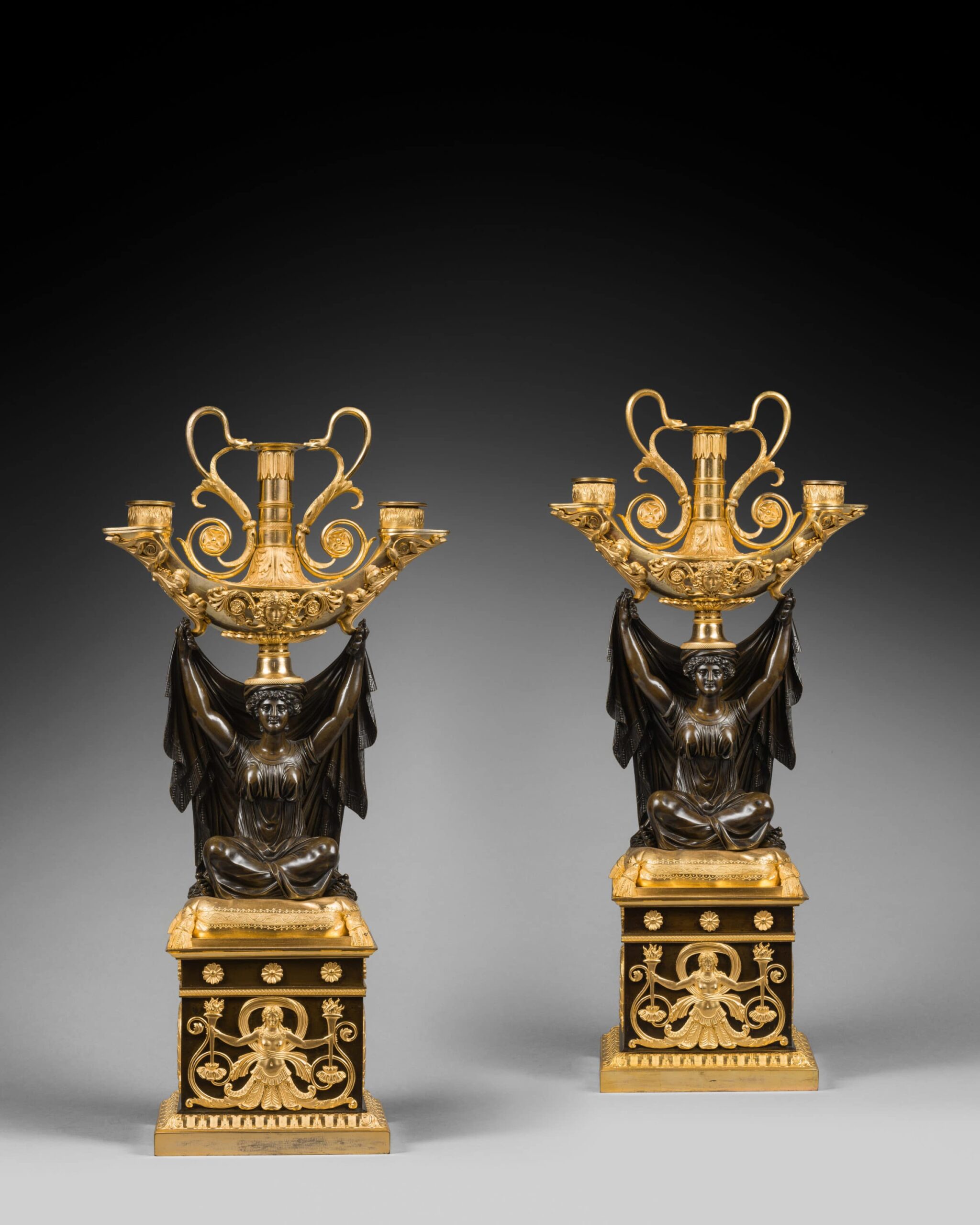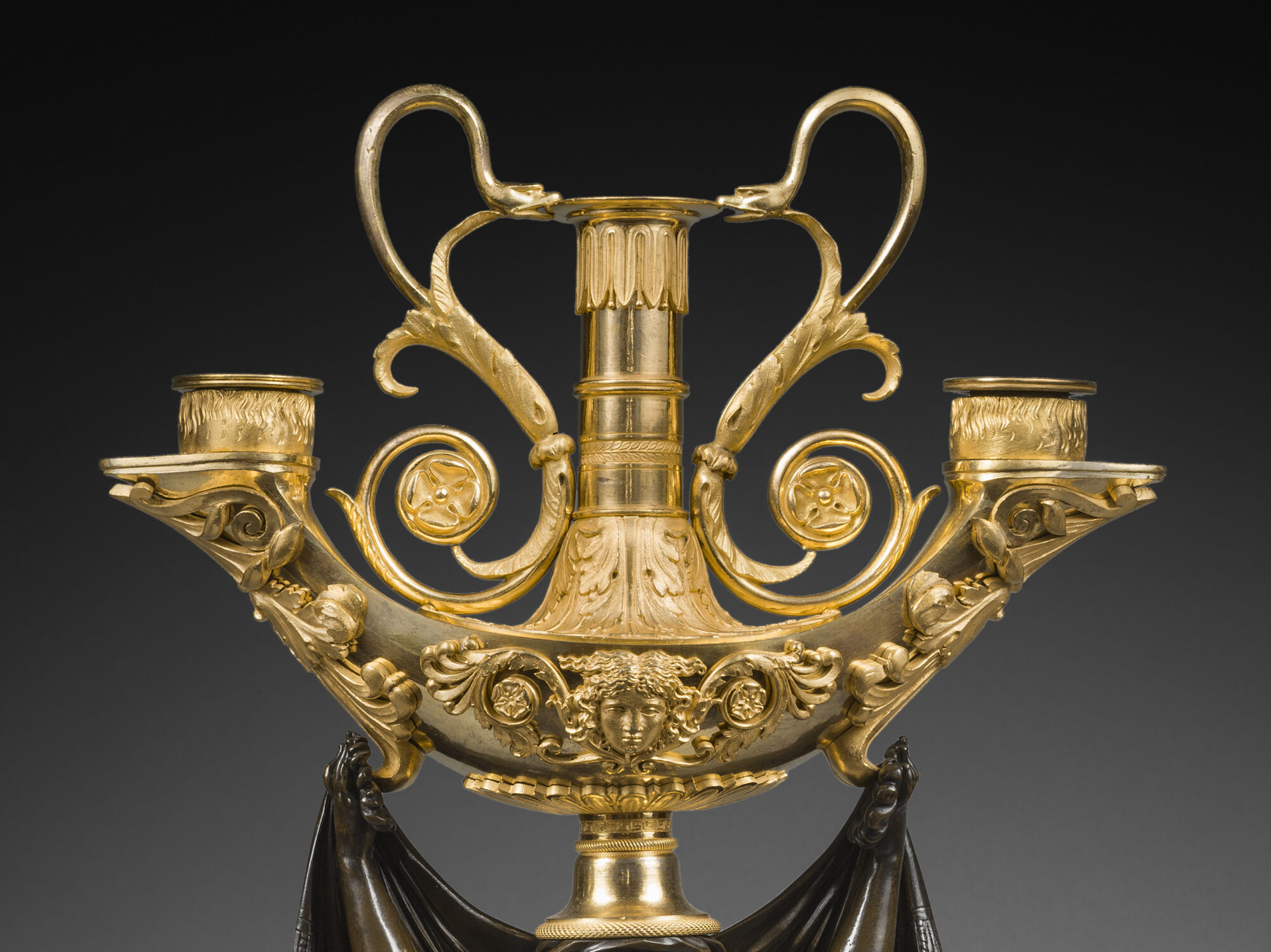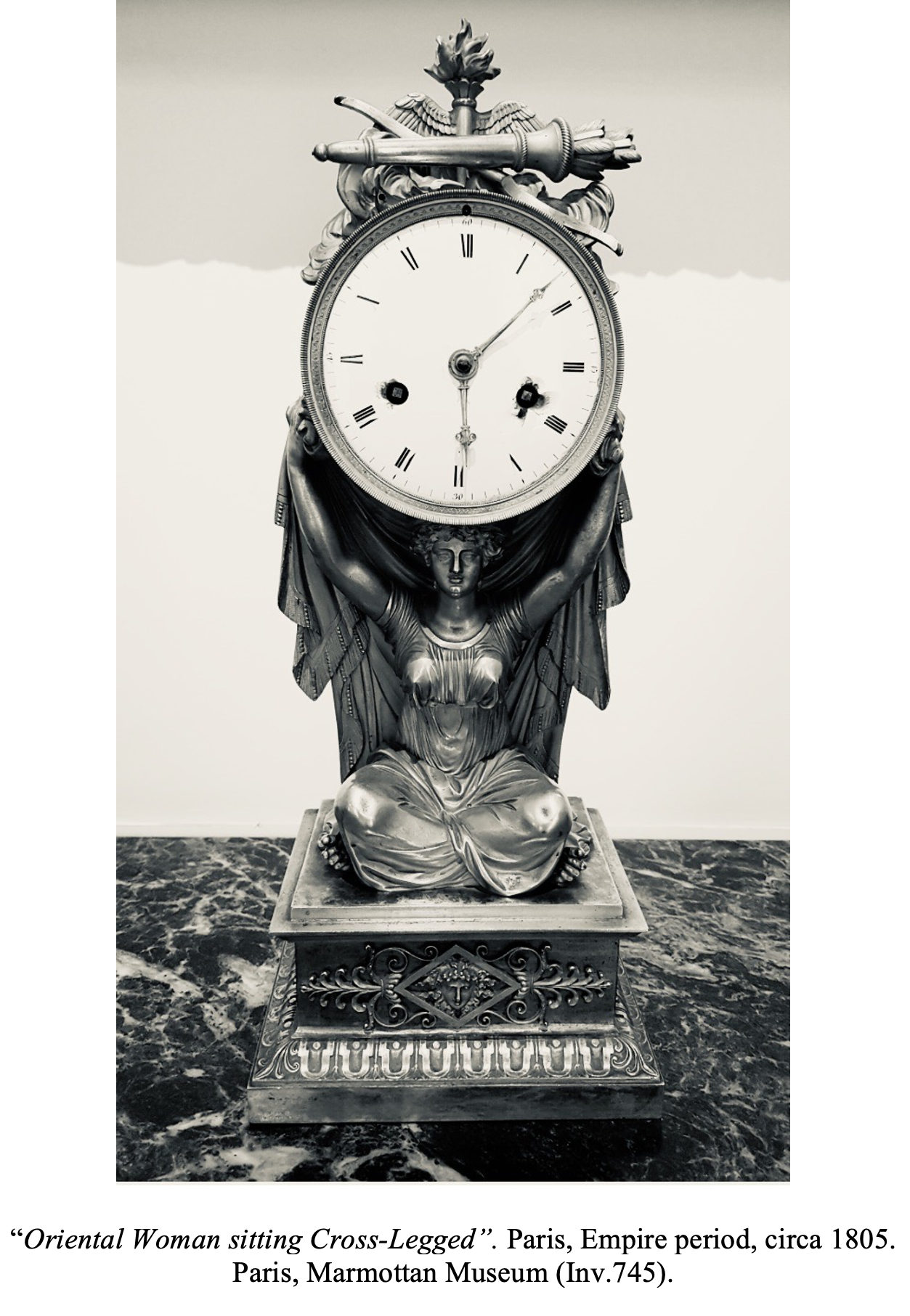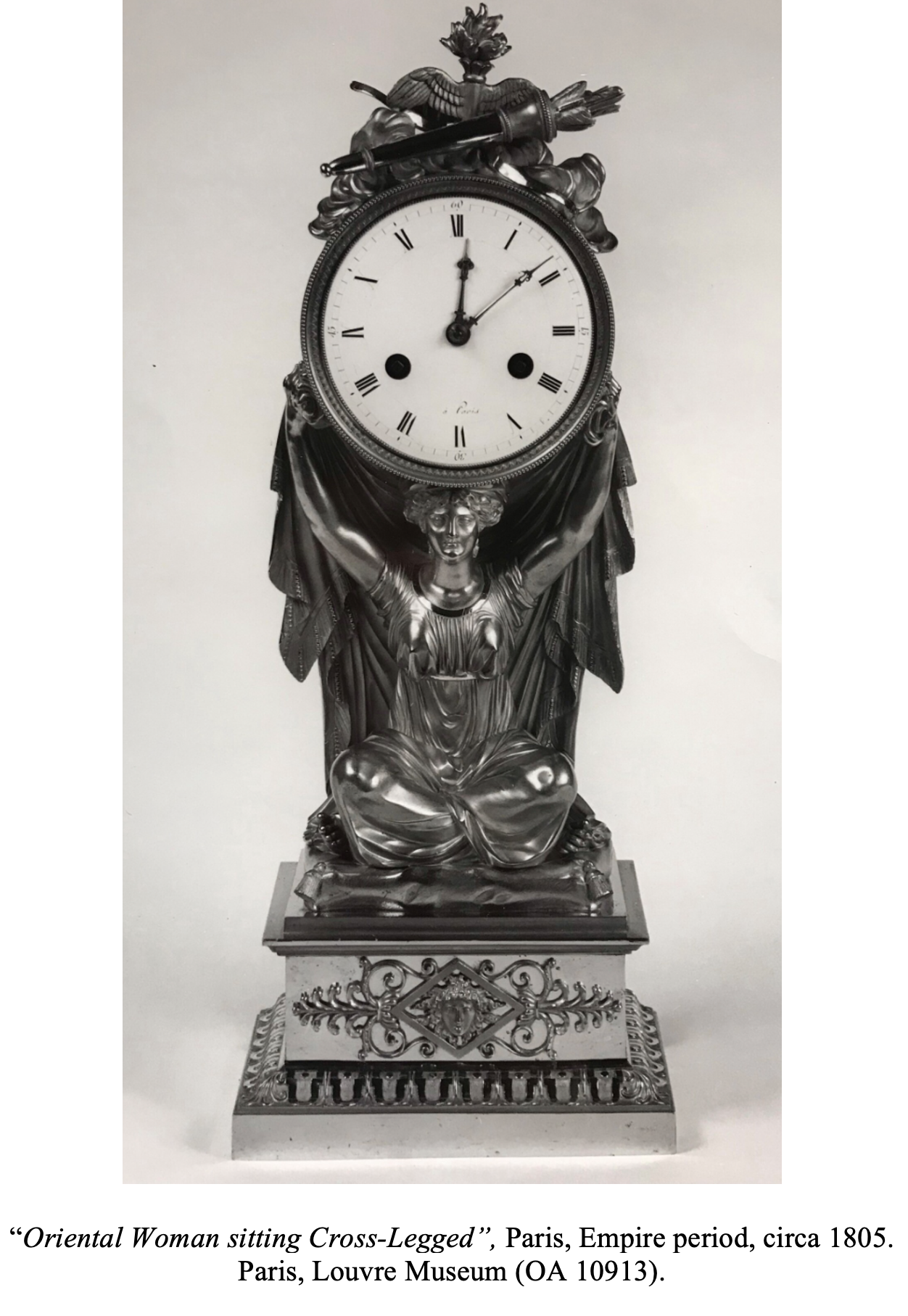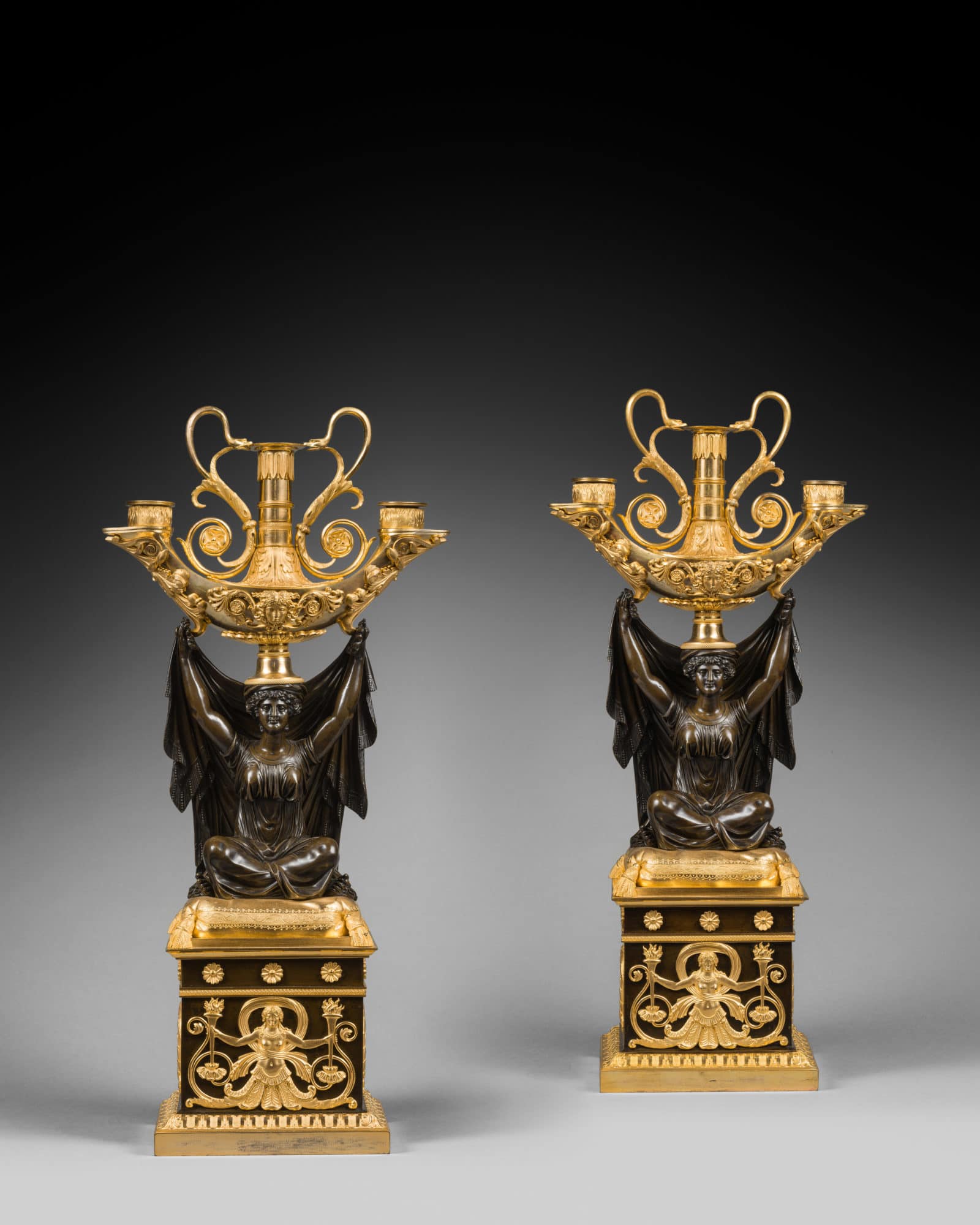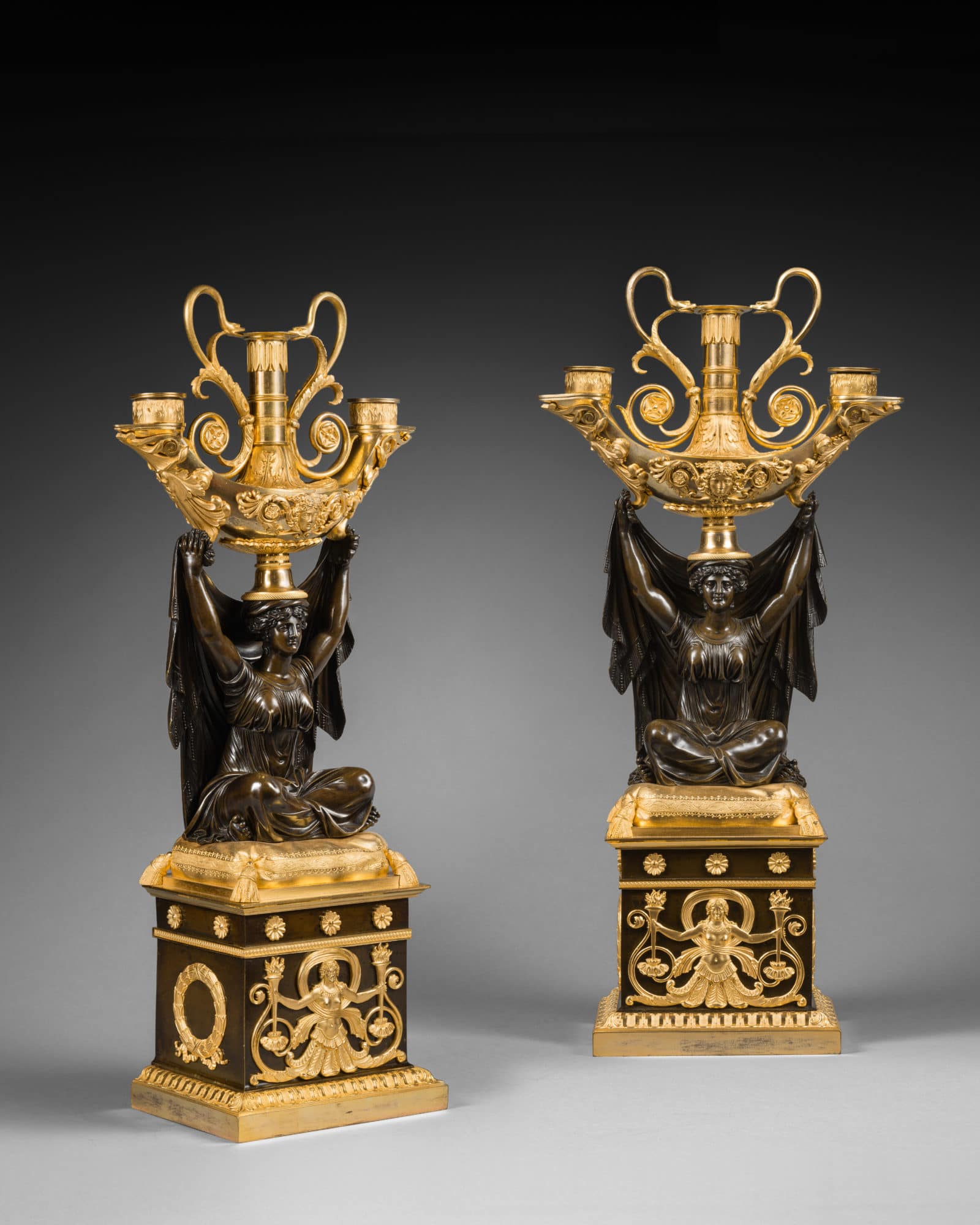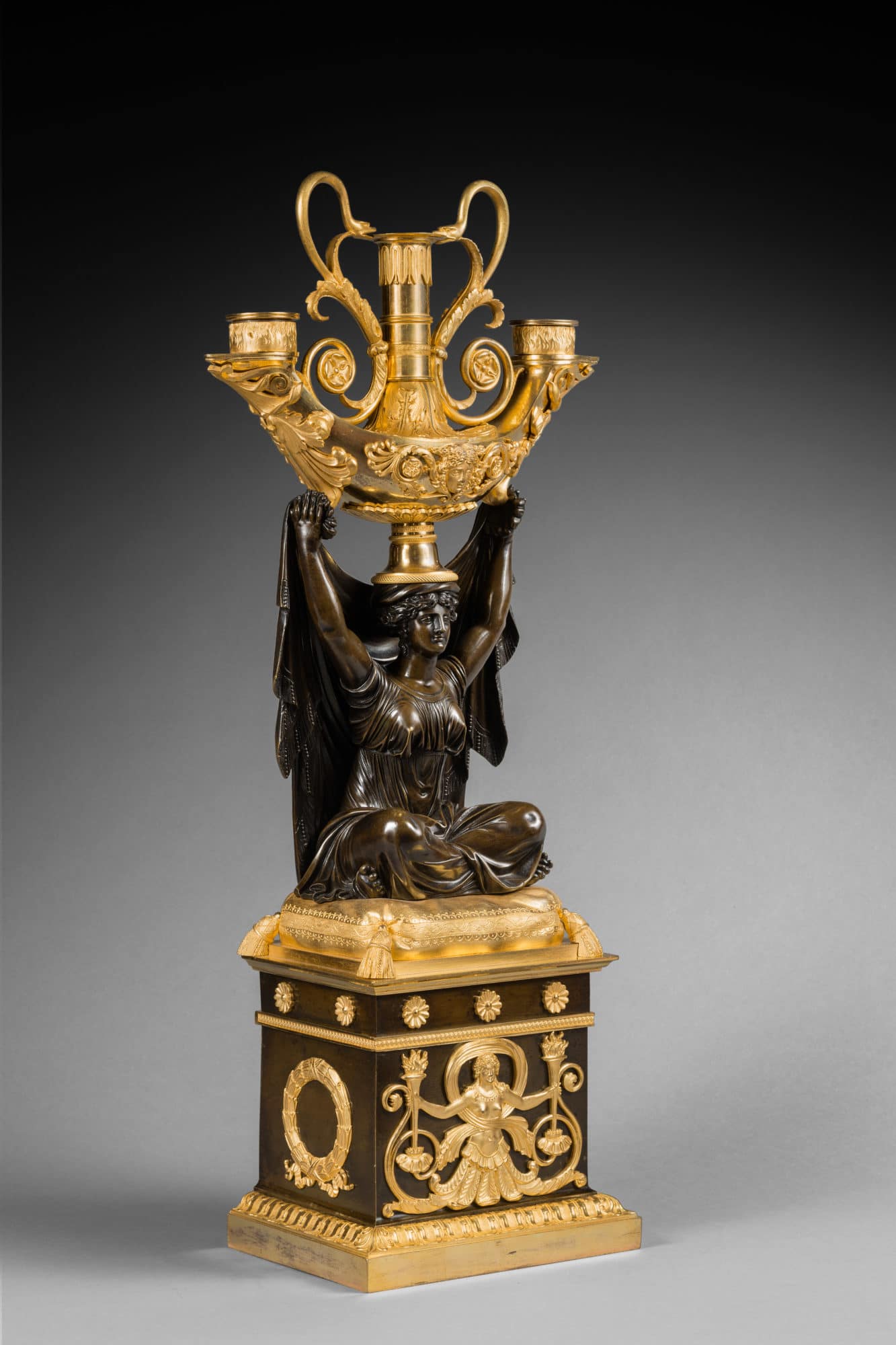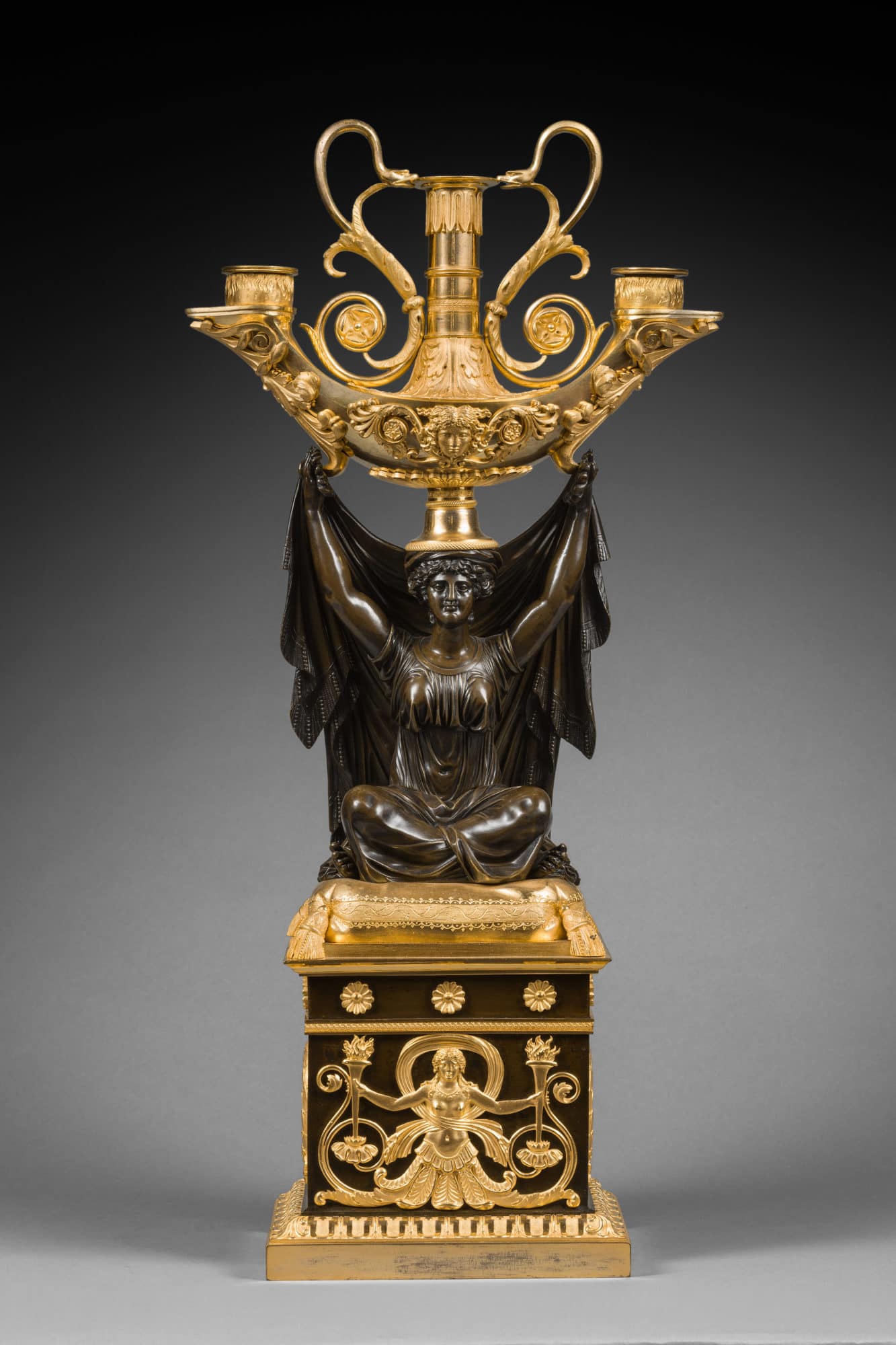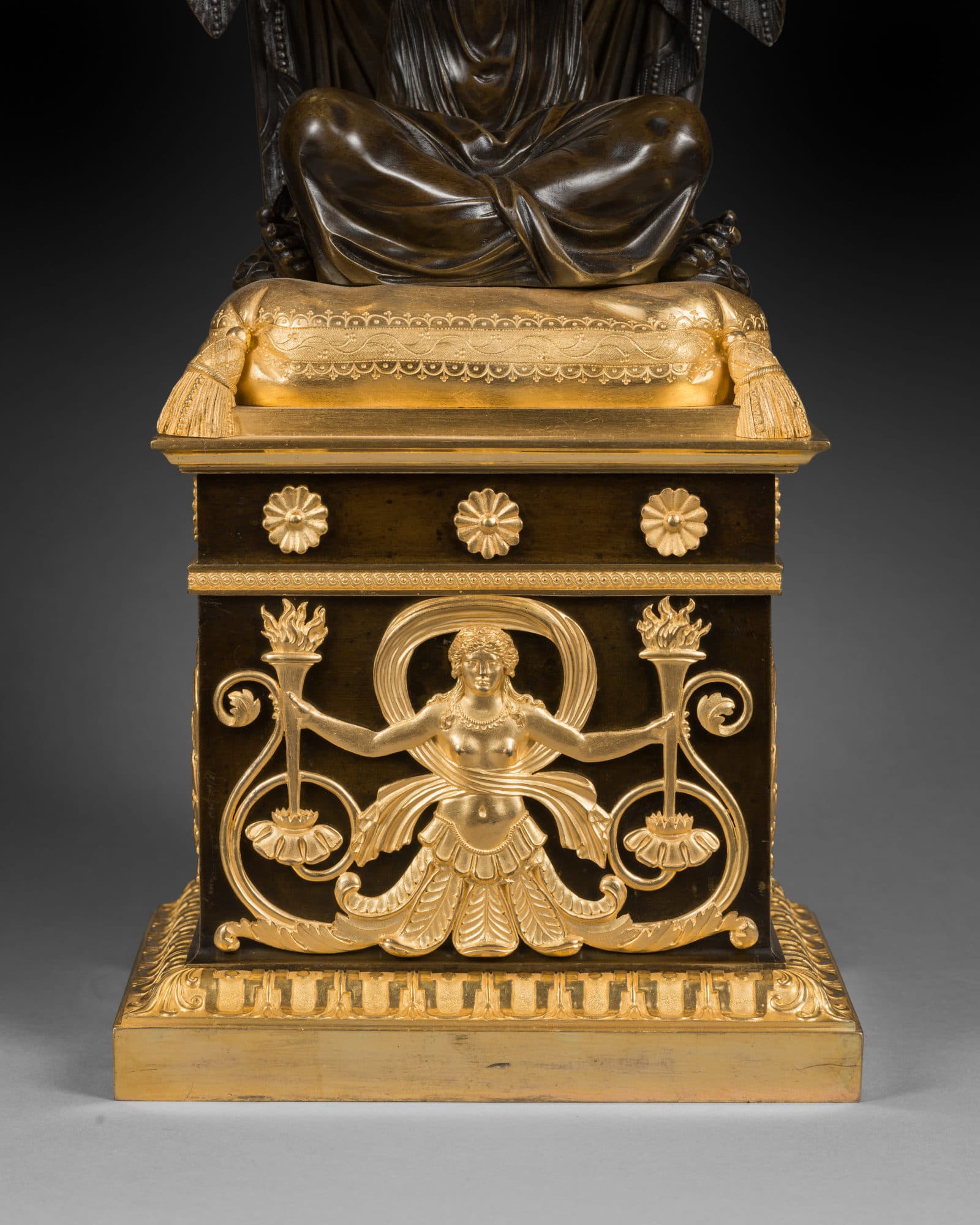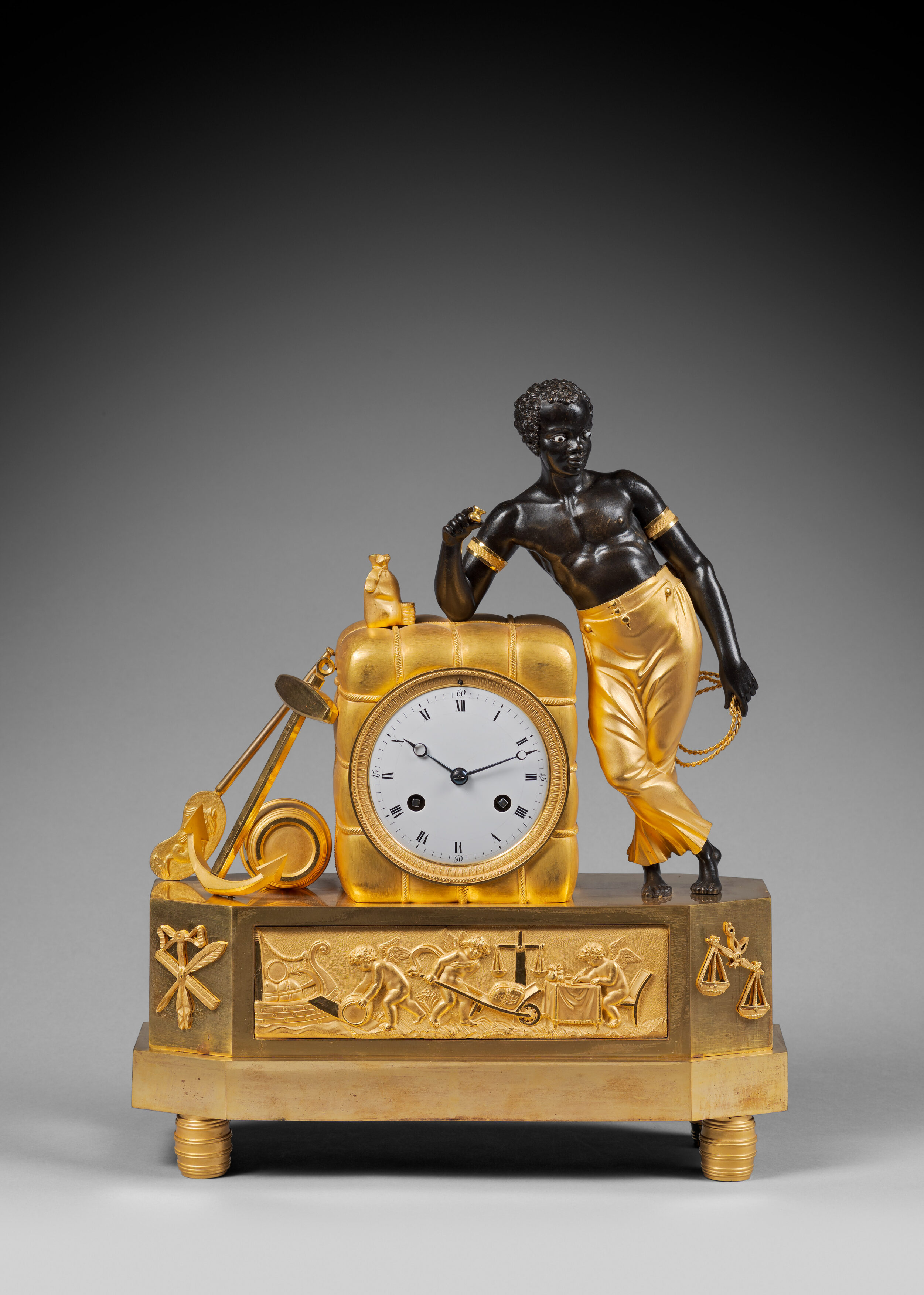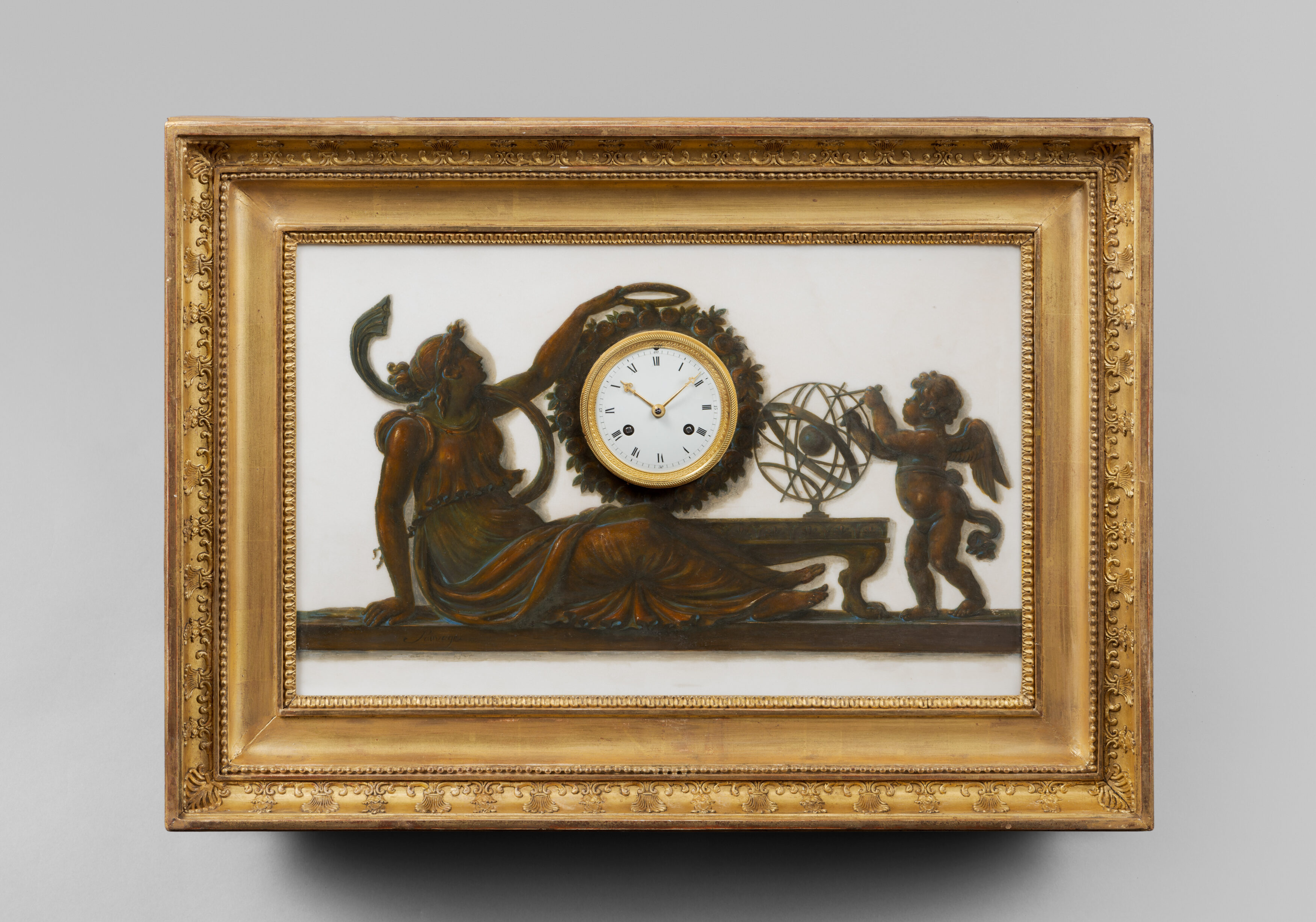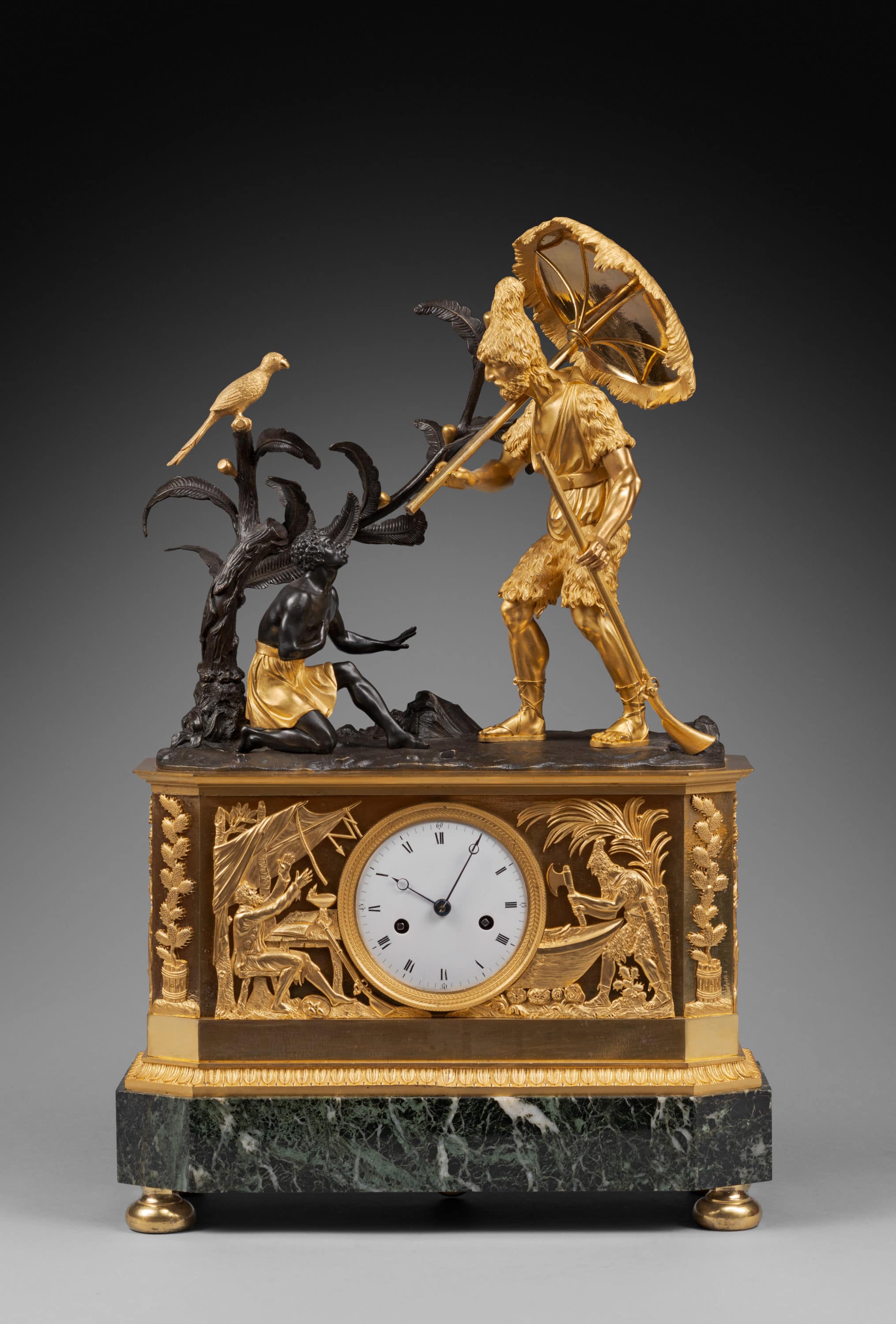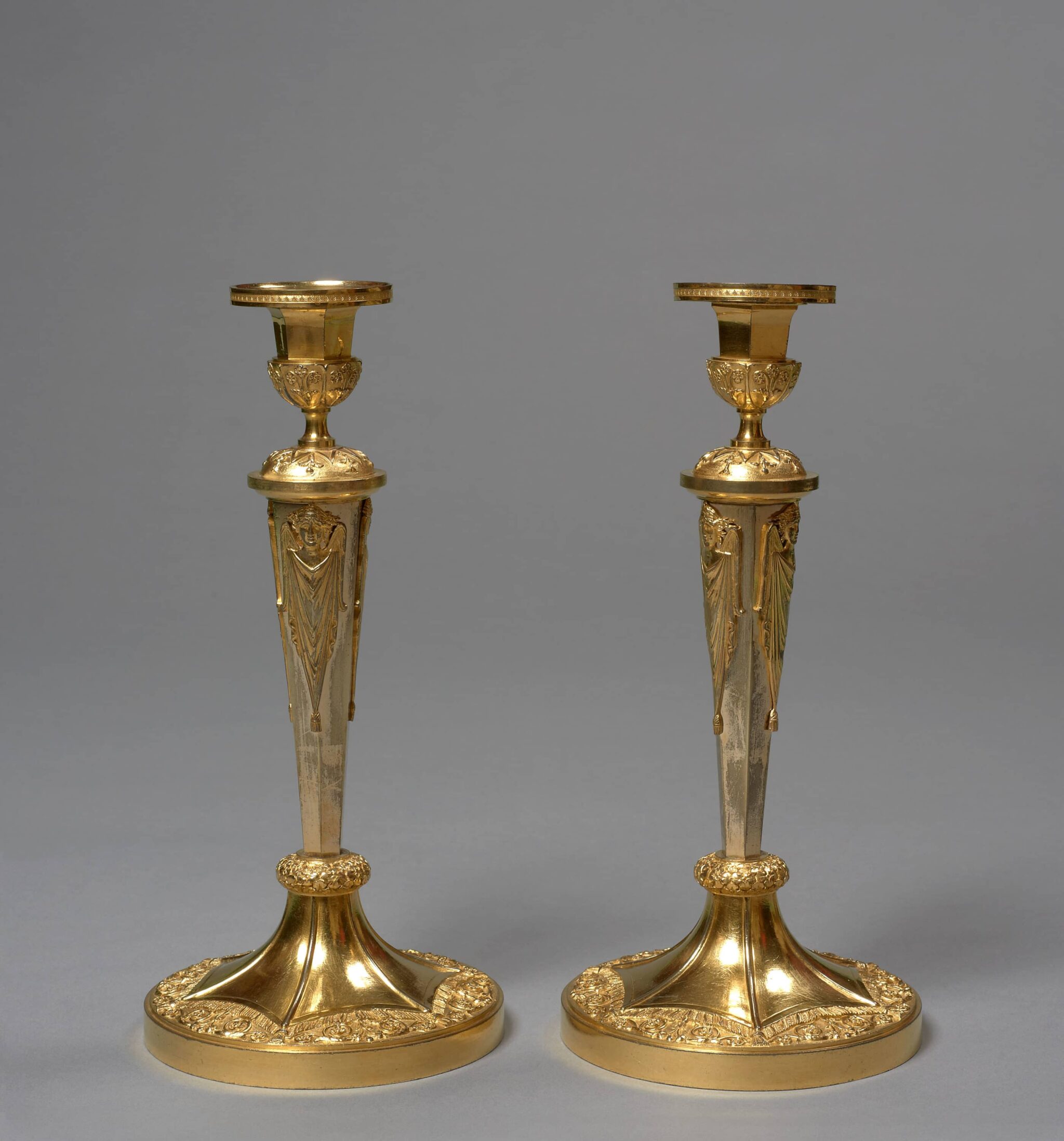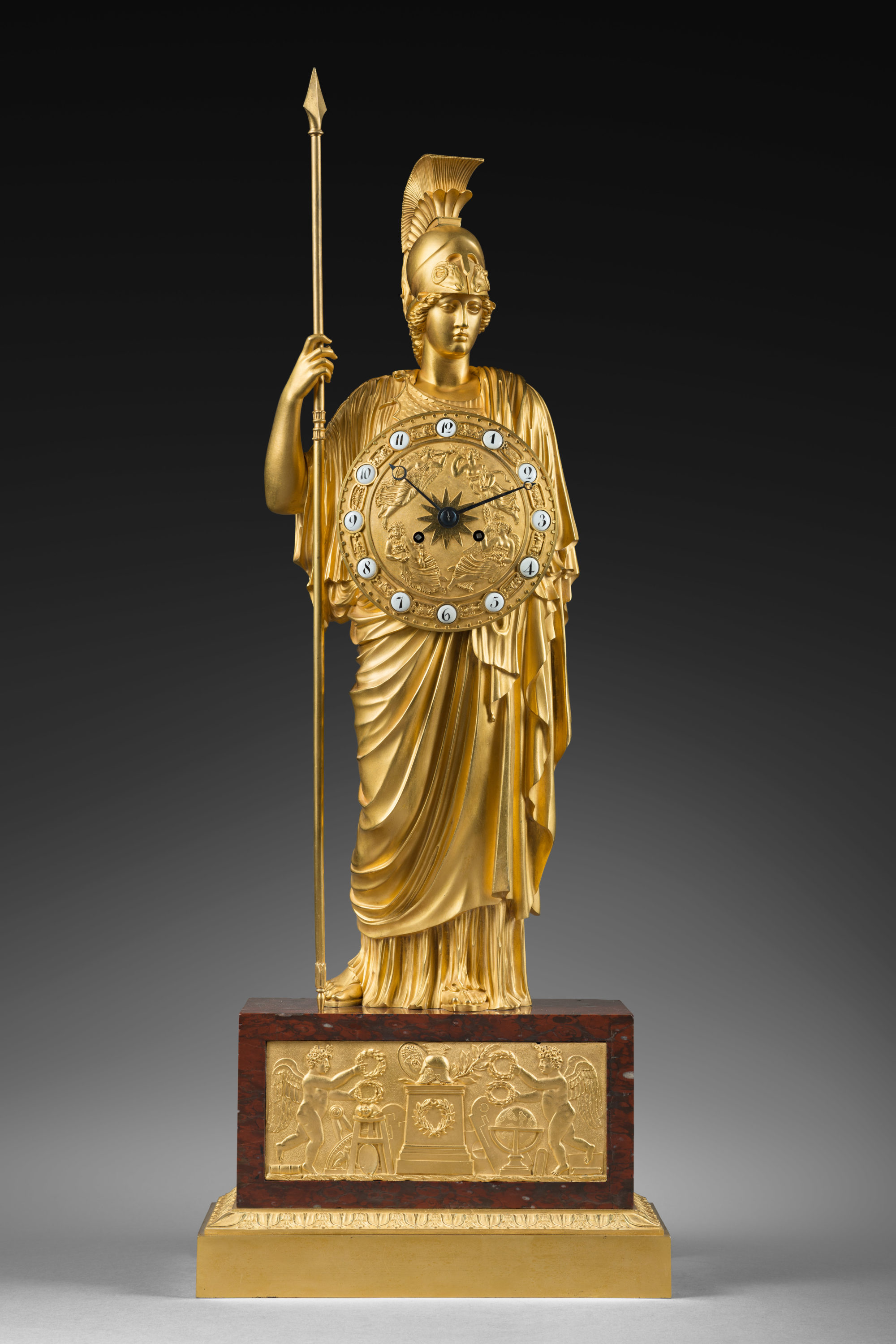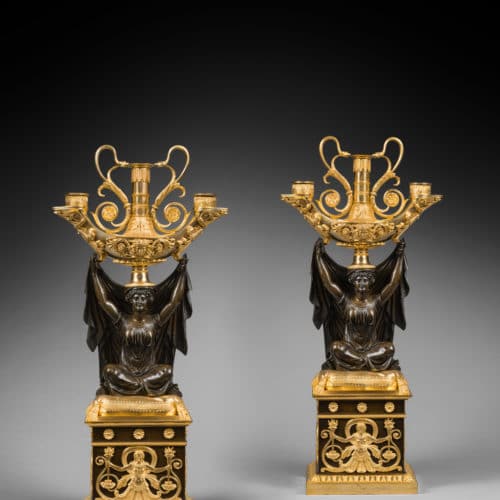Rare Pair of Gilt and Patinated Bronze Three-Light Candelabras with Matte and Burnished Finishing
The Seated Vestals or The Oriental Women Sitting
Made entirely of finely chased patinated and gilt bronze with matte and burnished finishing, the candelabra are in the form of magnificent, seated female figures with crossed legs, who are dressed in classical tunics. They hold fringed draperies that support candelabra in the form of oil lamps with two beakers, which are elaborately decorated with mascarons, scrolling, flowers, acanthus leaves, and rosettes. The lamps contain three nozzles, including a central one with arabesque handles in the shape of swans’ heads. The figures are seated on cushions that are engraved with leaves and stems and have tassels at each corner. The tall square bases are adorned with applied rosettes, ribbon-tied wreaths, and female figures with scrolls, holding torches. The quadrangular molded plinths feature lambrequin friezes alternating with roundels and stems.
The present candelabra feature an elaborate design, particularly as concerns the treatment of the seated female figures whose legs are crossed in an “oriental” posture, which appear to have been inspired by antique Egyptian sculptures of seated figures. One such model was singled out by the Count de Caylus, who included an illustration of it in his well-known Recueil d’Antiquités égyptiennes. The present candelabra, which have sometimes been attributed to a Russian bronze caster, stand out due to the exceptional quality of their gilding and chasing. This allows their confident attribution to Claude Galle, one of the most important Parisian bronziers of the Empire period.
Although there are some stylistic similarities with certain Russian creations of the period, and particularly those by Friedrich Bergenfeldt, the well-known bronzier to the Russian Court (see I. Sychev, Russian Bronze, Moscow, 2003, p. 96-97), the most striking similarities are those with a clock created by Galle around 1805; it represents a young woman who supports a clock movement with her upraised arms; one example of this model is in the Mobilier national in Paris (illustrated in M-F. Dupuy-Baylet, Pendules du Mobilier national 1800-1870, Editions Faton, Dijon, 2006, p. 114, n° 49). Among the small number of identical pairs of candelabra, one pair is illustrated in G. and R. Wannenes, Les bronzes ornementaux et les objets montés, De Louis XIV à Napoléon III, Milan, 2004, p. 375. A second pair, formerly in the Galerie Ariane Dandois in Paris, is illustrated in the exhibition catalogue L’Empire à travers l’Europe 1800-1830, Paris, 2000, catalogue n° 12.
Claude Galle (1759 - 1815)
One of the foremost bronziers and fondeur-ciseleurs of the late Louis XVI and Empire periods, Claude Galle was born at Villepreux near Versailles. He served his apprenticeship in Paris under the fondeur Pierre Foy, and in 1784 married Foy’s daughter. In 1786 he became a maitre-fondeur. After the death of his father-in-law in 1788, Galle took over his workshop, soon turning it into one the finest, and employing approximately 400 craftsmen. Galle moved to Quai de la Monnaie (later Quai de l’Unité), and then in 1805 to 60 Rue Vivienne.
The Garde-Meuble de la Couronne, under the direction of sculptor Jean Hauré from 1786-88, entrusted him with many commissions. Galle collaborated with many excellent artisans, including Pierre-Philippe Thomire, and furnished the majority of the furnishing bronzes for the Château de Fontainebleau during the Empire. He received many other Imperial commissions, among them light fittings, figural clock cases, and vases for the palaces of Saint-Cloud, the Trianons, the Tuileries, Compiègne, and Rambouillet. He supplied several Italian palaces, such as Monte Cavallo, Rome and Stupinigi near Turin.
In spite of his success, and due in part to his generous and lavish lifestyle, as well as to the failure of certain of his clients (such as the Prince Joseph Bonaparte) to pay what they owed, Galle often found himself in financial difficulty. Galle’s business was continued by his son after his death by his son, Gérard-Jean Galle (1788-1846). Today his work may be found in the world’s most important museums and collections, those mentioned above, as well as the Musée National du Château de Malmaison, the Musée Marmottan in Paris, the Museo de Reloges at Jerez de la Frontera, the Residenz in Munich, and the Victoria and Albert Museum in London.
Discover our entire collection of rare clocks on La Pendulerie Paris.
